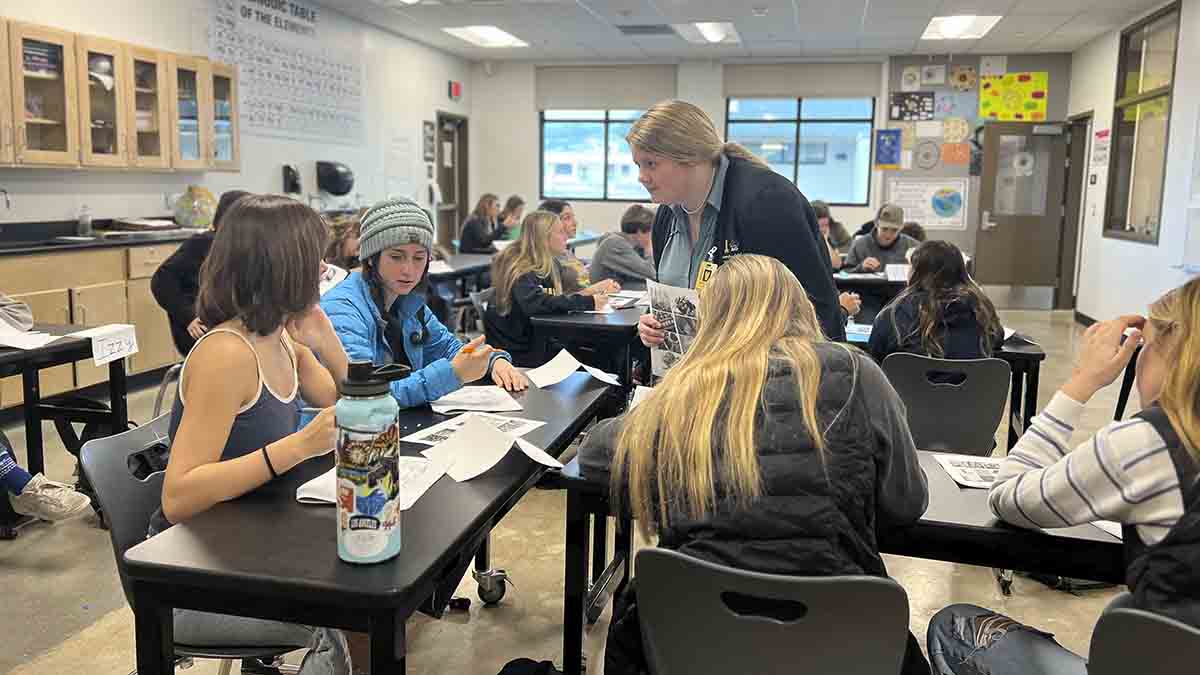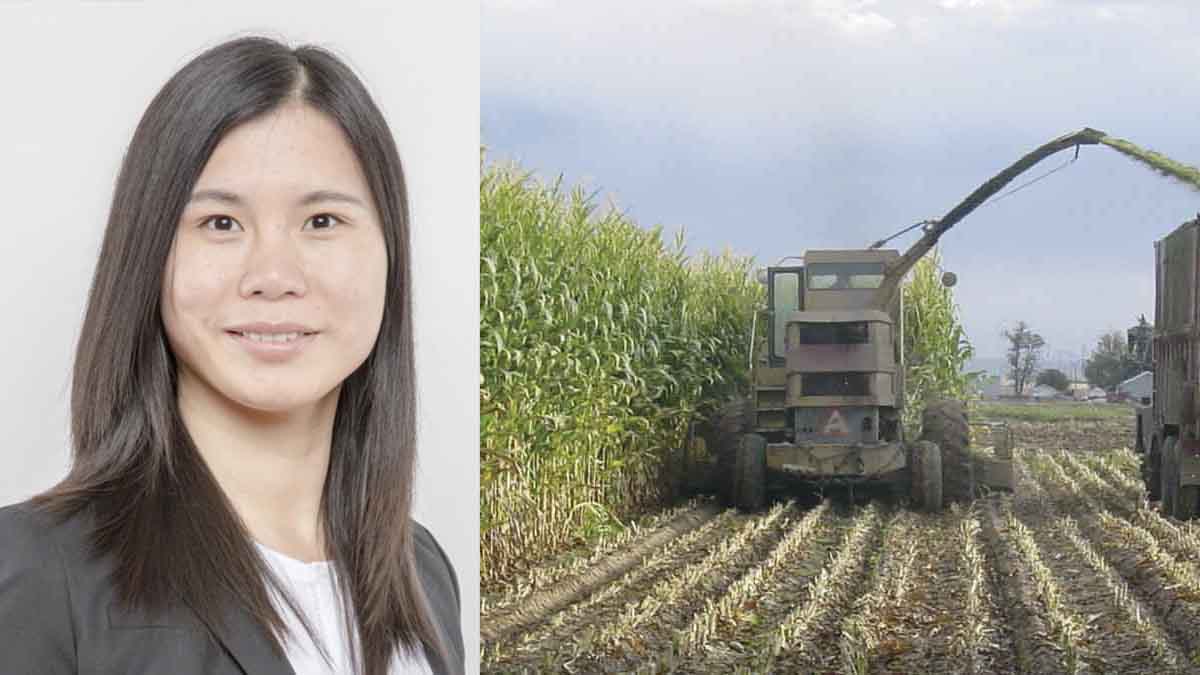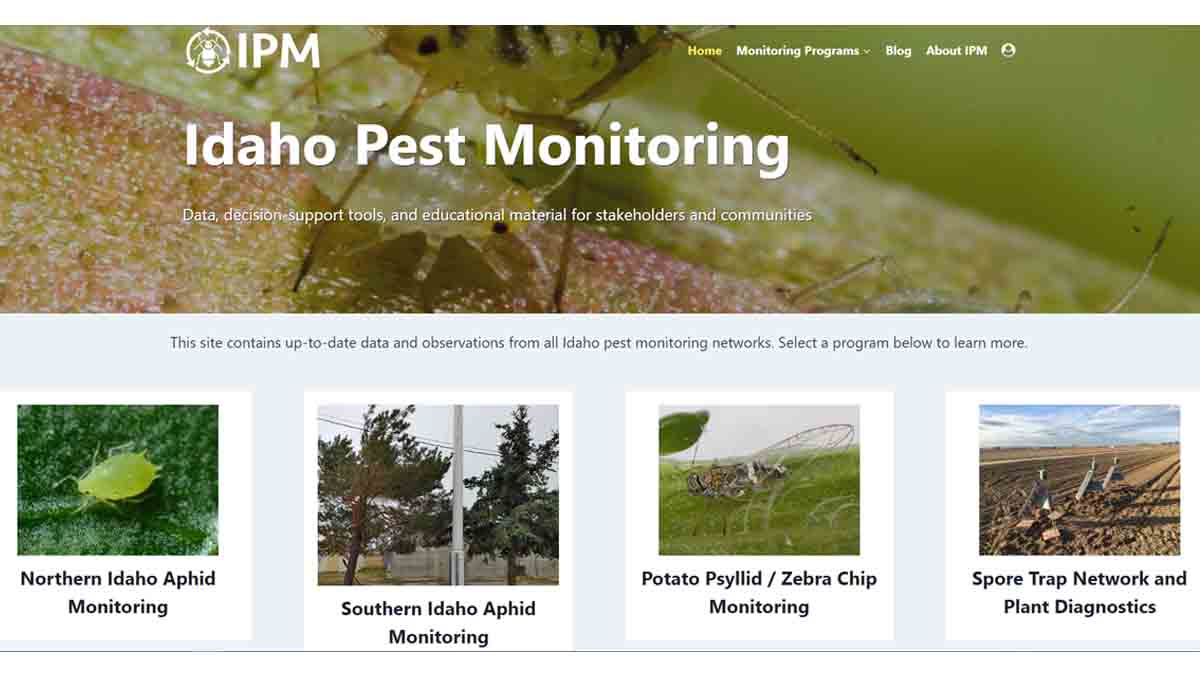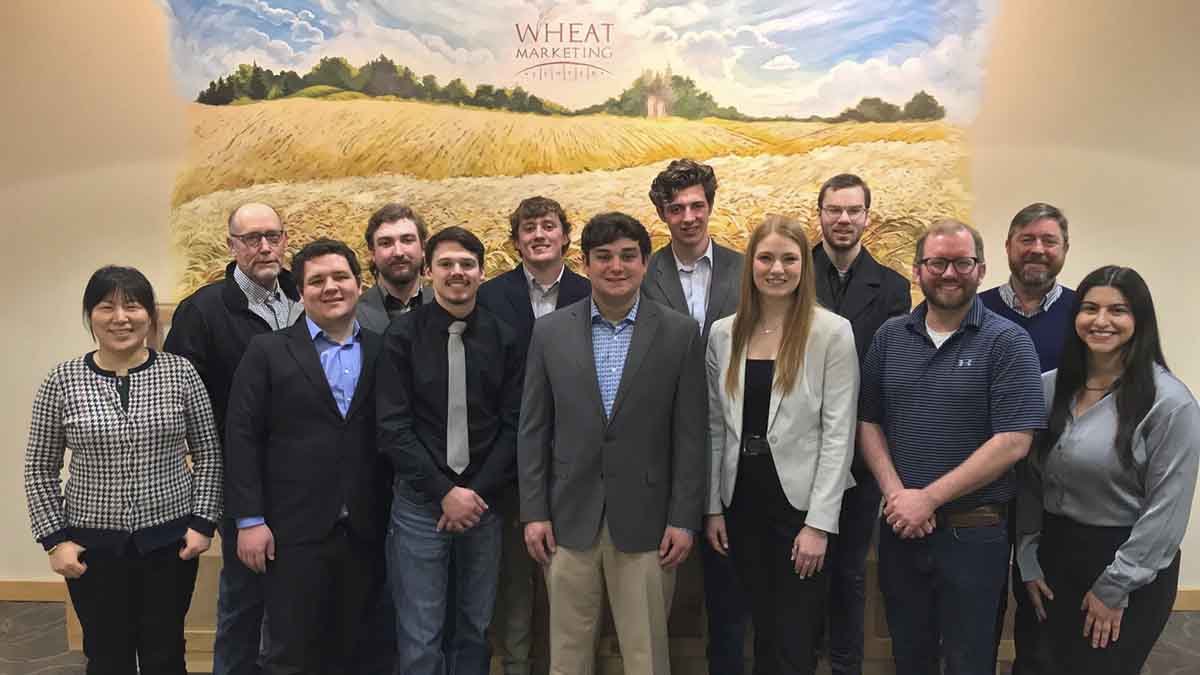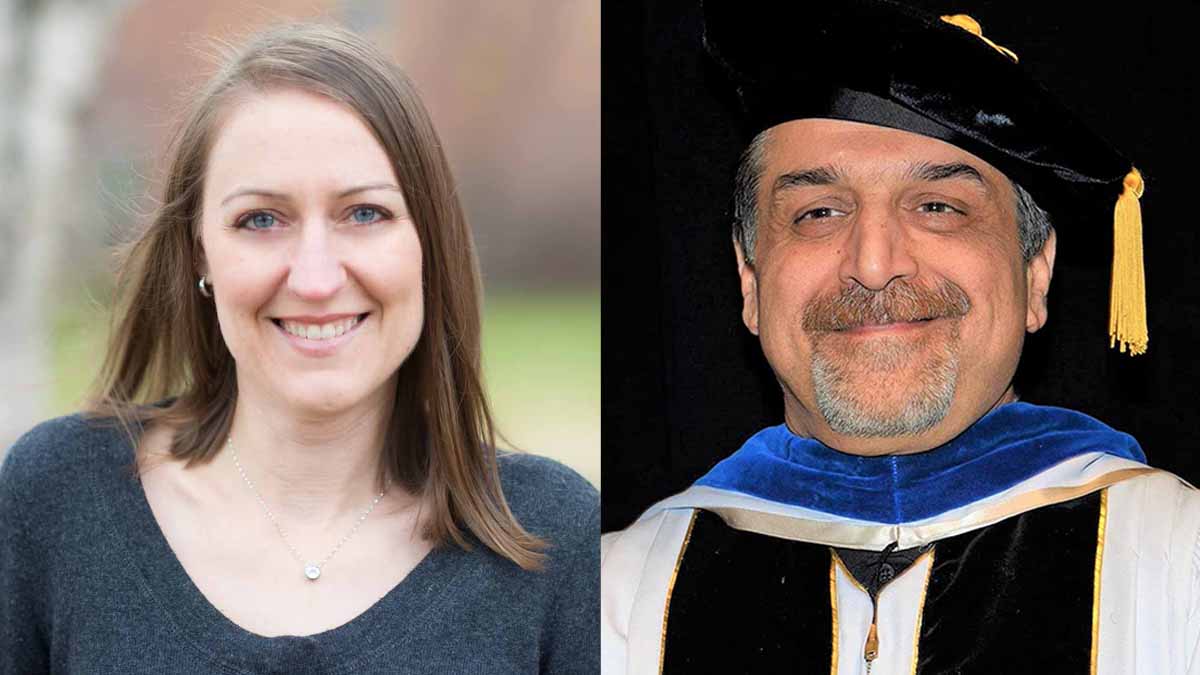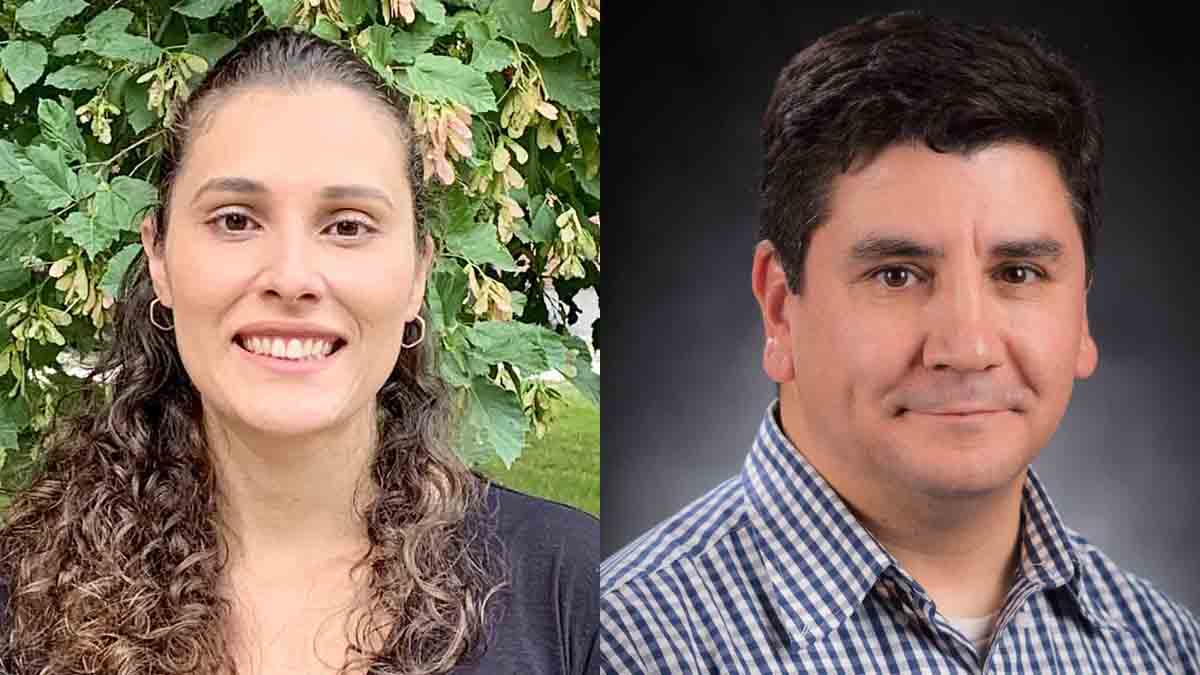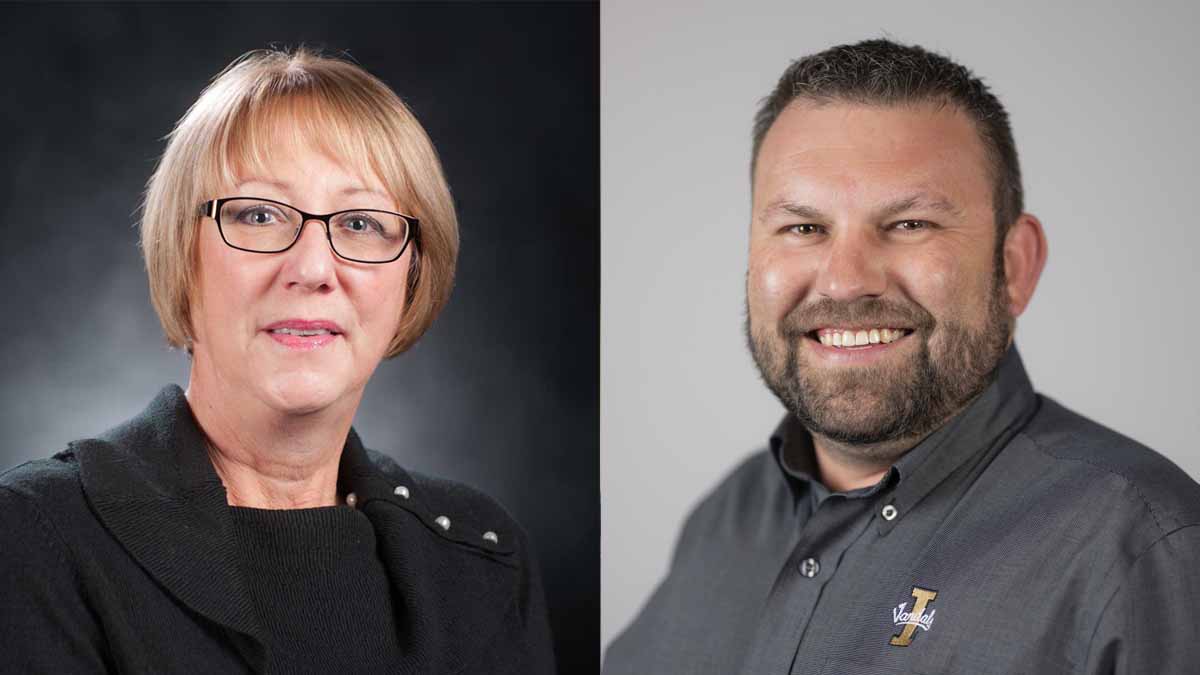Catching Up with CALS — April 5, 2023
Dean's Message — ARS Allies
It’s no accident that the University of Idaho research and extension centers in Kimberly and Aberdeen are neighbors with USDA Agricultural Research Service (ARS) stations. ARS has long been among our most valued partners. We’ve swapped office space in the interest of collaboration — ARS potato breeder Rich Novy and ARS research plant pathologist specializing in small grains and potato germplasm Jonathan Whitworth work from the Aberdeen Research and Extension Center, while our wheat breeder, Jianli Chen, has her office in the adjacent ARS building. We share royalties from our collaborative potato breeding program — a nonprofit corporation called the Potato Variety Management Institute handles licensing and royalty collections of potato varieties developed through a regional breeding effort involving U of I, ARS, Washington State University and Oregon State University, in conjunction with the potato commissions in each state. We plant promising cultivars from ARS barley breeder Gongshe Hu’s Aberdeen-based program in our cereal research plots, located throughout the state. Furthermore, the research leader at the Kimberly ARS facility, David Bjorneberg, helps guide CALS decisions as a member of my Dean’s Advisory Board.
On the Moscow campus, the ARS Animal Disease Research Unit (ARDU) occupies space in our Analytical Sciences building. U of I researchers also routinely partner with scientists from ARDU and the ARS-run U.S. Sheep Experiment Station in Dubois. Brenda Murdoch, an associate professor of animal, veterinary and food sciences, is working with colleagues from ARDU and the sheep station to identify biological factors and genetic markers associated with domestic sheep that don’t transmit the devastating disease Mycoplasma ovipneumoniae to their wild counterparts. Murdoch and Melinda Ellison — an Extension specialist focusing on range, livestock and sheep — and several of their graduate students have been involved in research assessing the genetics and heritability of how sheep taste food, aimed at improving management of sheep grazing. U of I and ARS, along with the Columbia River Inter-Tribal Fish Commission, have formal collaborative research agreements to share equipment, space and expertise at our Aquaculture Research Institute (ARI) in Hagerman. ARI is regarded as the top U.S. program for freshwater fish research and has done groundbreaking work in fish nutrition.
Having recently met with the new Pacific West area director for ARS, Tara McHugh, I’m confident that U of I and ARS are poised to build upon these existing collaborations and forge several new fruitful partnerships. McHugh, who is the former director of the agency’s Western Regional Research Center in Albany, California, started in her current position on Oct. 1. She has a strong food science background and plans to speak on campus about her experience with developing innovative food processing technologies that improve the nutrition, sustainability and safety of food. It’s encouraging that she partnered with universities and commodity organizations to commercialize those products. McHugh is also eager to continue the dialogue about new and creative ways for her agency and our institution to pool our resources and find greater strength in numbers. McHugh reasons, “Big scientific challenges require multidisciplinary, interorganizational collaborations in order to solve them.”
Working together should help us leverage more grant funding toward our similar missions in support of Idaho’s food and agriculture industry. McHugh is especially keen on mutual opportunities that will spring from the forthcoming U of I-led Idaho Center for Agriculture, Food and the Environment (Idaho CAFE), which will include the nation’s largest research dairy in Rupert. We’re currently pursuing a $6 million community development project to build a sophisticated nutrient-management facility serving the dairy. We’re also pursuing an ongoing federal appropriation to fund three CALS positions and three ARS positions focused on the research needs of Idaho CAFE. During a recent trip to Washington, D.C., I discussed the importance of funding for the Idaho CAFE nutrient-management facility with officials and lawmakers. I also visited with them about the addition of $10 million for the U.S. Forest Service to partner with land grant institutions on wildfire research, as well as $2 million for ARS to conduct research in conjunction with U of I to develop solutions for resilient inland aquaculture. With allies such as ARS at our side, we strengthen our position and set the stage to have our best research ahead of us.

Michael P. Parrella
Dean
College of Agricultural and Life Sciences
By the Numbers
Braver. Bolder. Unstoppable, Together Vandal Giving Day 2023 is a 1,889-minute, online celebration of philanthropy running April 4-5. The College of Agricultural and Life Sciences and University of Idaho Extension 4-H Youth Development are among 33 participating groups. The groups will offer a variety of challenges to incentivize donations, including 7 challenges within CALS. For the Dean Parrella CALS Excellence Challenge, surpassing the total gifts made to CALS last year will unlock $1,000 toward the CALS Excellence Fund. Furthermore, $250 will be unlocked when a total of 50 gifts are made to any CALS or 4-H designation, another $250 will be unlocked when a total of 100 gifts are made and the last $500 will be unlocked after 125 gifts for CALS and 4-H are reached. For the CALS Department Leaderboard Challenge, the top 3 departments with the largest percentage increase of donors to their respective annual funds based on last year’s Vandal Giving Day will unlock bonus funds totaling $5,000. For the Department of Agricultural Education, Leadership and Communications (AELC) Donor Challenge, Kattlyn Wolf, AELC department head, will donate $250 in support of AELC when 8 donors have given a gift to support AELC. If 16 donors give to AELC, an additional gift of $250 will be unlocked, totaling $500. For the Department of Animal, Veterinary and Food Sciences (AVFS) Donor Challenge, Bob Collier, AVFS department head, will donate $500 in support of AVFS when 6 donors have given a gift to support AVFS. If 10 donors give to AVFS, an additional gift of $500 will be unlocked, totaling $1,000. For the Margaret Ritchie School of Family and Consumer Sciences (FCS) Donor Challenge, Shelley McGuire, director of the school, will donate $500 in support of FCS when 25 donors give to FCS. If 30 donors give to FCS, an additional gift of $500 will be unlocked, totaling $1,000. For the UI Extension Challenge, $250 from the UI Extension Administrative Leadership Team will be unlocked in support of the UI Extension Support Endowment after 5 gifts to the fund are completed. An additional $250 will be unlocked if 10 gifts are completed in support of UI Extension. For the Support Your Local 4-H Leaderboard Challenge, the top 3 4-H county offices with the largest increase of donors compared to last year’s Vandal Giving Day will unlock bonus funds totaling $1,000. For the Department of Agricultural Economics and Rural Sociology (AERS) Donor Challenge, Chris McIntosh, department head, will donate $500 in support of AERS scholarships when 24 donors have given a gift to support AERS. If 29 donors give to AERS, an additional gift of $500 will be unlocked, totaling $1,000.
Our Stories
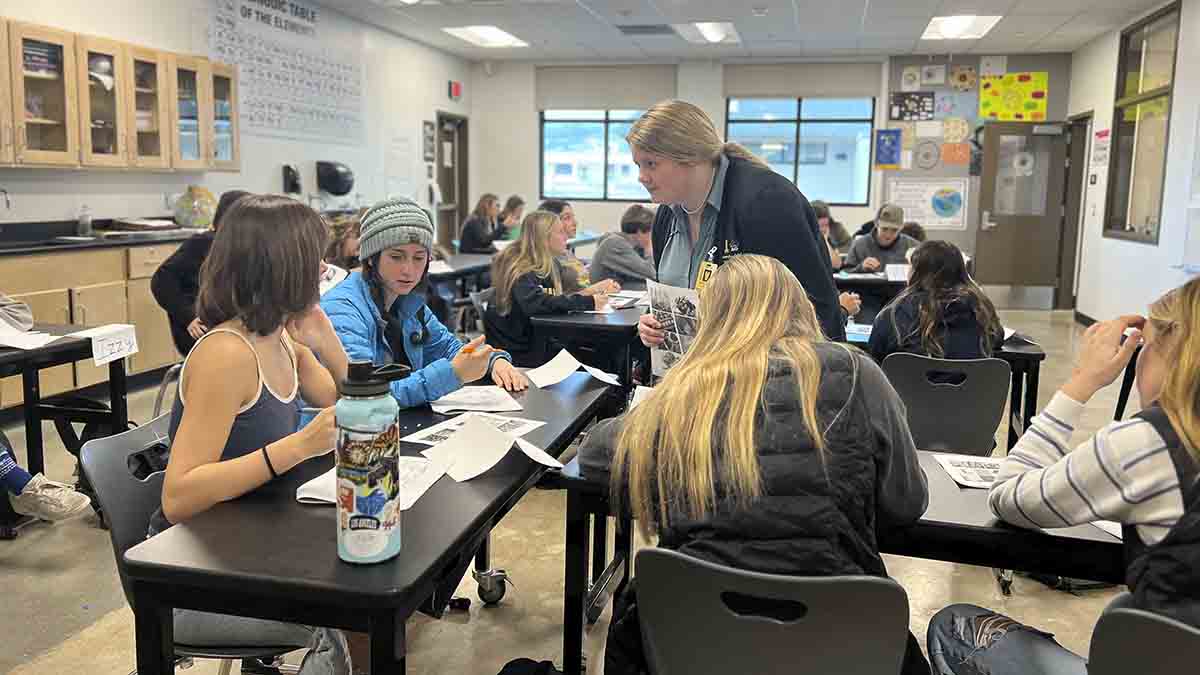
Teaching Ag Ed in U.S. Schools
Students speak 41 native languages at John Bowne High School in Flushing, New York, which boasts one of the nation’s most diverse student bodies and provided an ideal setting for University of Idaho agricultural education students to broaden their horizons.
John Bowne was among five U.S. schools to welcome students from U of I and Penn State University for a week of guest teaching. The 2023 spring break immersion experience was part of a USDA-funded program to provide future agricultural educators with teaching experiences to make them more culturally responsive and globally educated.
During their spring break, 10 aspiring agricultural teachers from U of I and nine from Penn State assumed control of high school and middle school classrooms in New York, North Carolina, Florida, California and Utah.
Participating students in the collaborative pilot program — mostly juniors majoring in agricultural education — undergo a year of real-world experiences and related coursework. Called Global Orientation to Agricultural Learning (GOALs), the pilot will wrap up its second year this spring. U of I received word in March 2023 that USDA has awarded another grant for $750,000 to continue and expand the program for three more years, starting with the fall 2023 cohort.
“You simply cannot learn to be an educator only within the walls of a classroom on a college campus,” said Kasee Smith, an associate professor of agricultural education, leadership and communications, who co-leads the U of I program along with Jeremy Falk. “I think it is so important that we keep students connected to the realities of the world and the ways that they can help make a difference.”
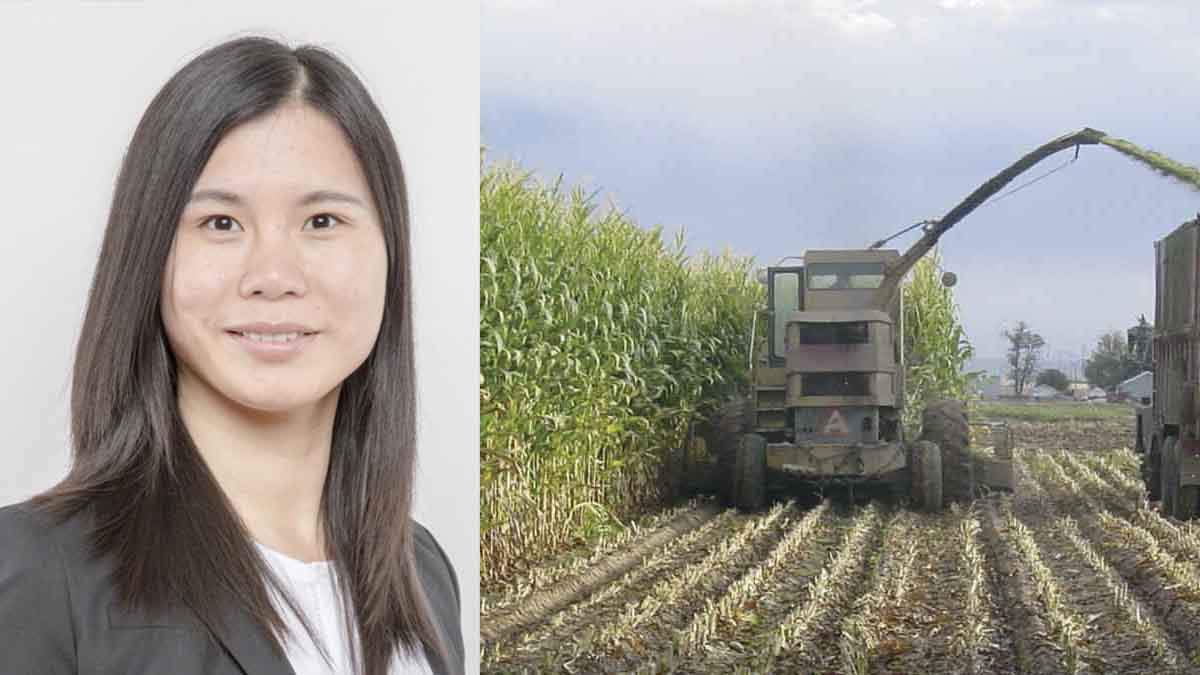
Predicting Corn Prices
A University of Idaho researcher helped to create a commodity markets forecasting model that rivals USDA’s two preferred models at predicting corn prices.
Xiaoli Etienne, Idaho Wheat Commission endowed chair in commodity risk management, started work on the project while employed at West Virginia University (WVU), where she received a $20,000 grant from USDA’s Economic Research Service to fund the effort. Etienne and her colleagues have continued perfecting the model since she joined U of I.
Etienne’s team included her former graduate student at WVU, Sara Farhangdoost, and USDA ERS economists Linwood Hoffman and Brian Adam. Their paper, “An Alternative Method to Forecast the Season-average Price for U.S. Corn,” is currently in revision for publication in the Journal of Commodity Markets.
The alternative model they created uses only publicly available data, unlike the agency’s go-to forecast, the World Agricultural Supply and Demand Estimates (WASDE), which Etienne describes as using a “black box” model. WASDE is released monthly based on a top-secret equation and private data, including global market factors often unknown by the public.
USDA’s WASDE forecast has major implications, as it can influence markets and producers’ planting decisions and is used for calculating government payment programs.
The new alternative model slightly outperforms WASDE from January through April.
“Whether it’s economically significant, that’s another paper to write,” Etienne said.
Their model tracks closely with WASDE throughout the rest of the year — with WASDE having a slight edge during the growing season. In most months, their alternative model also outperforms the other model commonly used by USDA ERS — the Hoffman model developed by Etienne’s team member Linwood Hoffman.
The Hoffman model bases its forecasts on publicly available futures price data. Futures contracts involve locking in future delivery of a commodity at a price set today. Etienne’s alternative model also relies heavily on futures prices, but it adds in current cash prices, providing some real-world data while recognizing many commodities aren’t sold on the futures market.
Etienne’s alternative model is slightly more laborious to calculate than the Hoffman model, requiring regression analysis — statistical processes for evaluating the strength of relationships between elements. Both the Hoffman model and the alternative model offer far greater flexibility than WASDE reports, as they can be computed by any economist at any time, while WASDE is secretive and publishes at a set time of each month.
The alternative model has performed especially well when run against actual price data since 2004, despite extreme corn market fluctuations during those years, demonstrating that it’s highly effective during periods of volatility.
“In years of volatility in prices, the model performs much better,” Etienne said. “That’s when the forecasting really matters. When prices are so volatile, no one knows what the price will be.”
The alternative model was also highly accurate when used for predicting soybean prices. Etienne believes each model fills a niche and using them together would be prudent.
“We need to consider a composite approach,” she said.
The research was funded by USDA ERS under cooperative agreement No. 58-3000-7-0014 with West Virginia University.
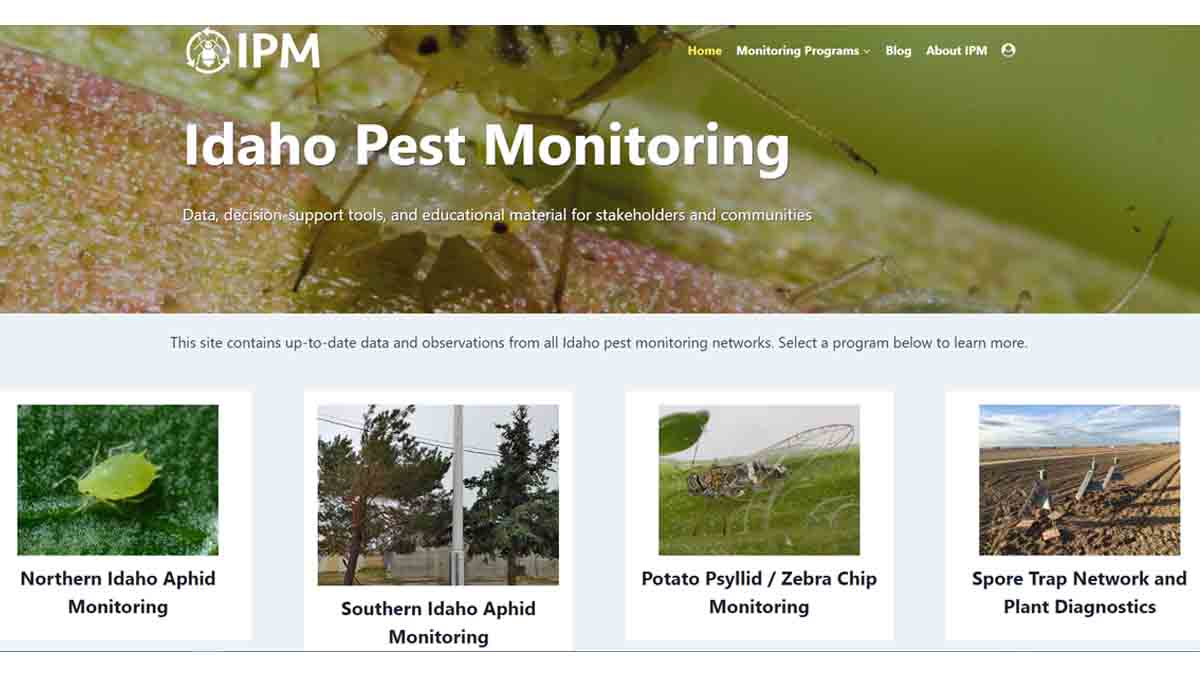
Online Resource for Scouting Pests
After a year of fine-tuning, University of Idaho Extension is promoting a website launched to offer a “one-stop shop” for Idaho farmers and crop consultants providing data from the various College of Agricultural and Life Sciences pest monitoring programs.
The Idaho Pest Monitoring Dashboard debuted last spring and includes data and observations from UI Extension programs that monitor the arrival of potato psyllids, aphids and wind-blown spores to inform farmers in making decisions such as when to apply chemicals.
The site consolidates information now available to growers through a host of different websites and via Pacific Northwest Pest Alerts, which are sent by email or text messages. The dashboard makes it easier for users to navigate and manipulate displays of the data and for Extension staff to upload new data and instantly update charts and graphs. The site also enables users to create their own graphs isolating data for specific years or counties of interest.
“We needed time to figure out how to use it ourselves, so we haven’t been promoting it until now,” said Kasia Duellman, UI Extension seed potato specialist. “The IPM dashboard is dynamic and you can look at it and play with the data and see what’s happening in your area.”
The site currently links to pages devoted to a network of sticky card traps for monitoring potato psyllids that spread zebra chip disease in potatoes, a network of spore traps warning growers of the risk of late blight and other fungal potato diseases, an aphid trapping program warning potato farmers from potato virus Y (PVY) in southern and eastern Idaho and an aphid trapping program in northern Idaho and Eastern Washington detecting viruses of importance to pea and lentil growers.
Sanford Eigenbrode, a University Distinguished Professor of entomology, started the pea and lentil aphid monitoring network, called the Legume Virus Project, in 2007.
UI Extension plant pathologist James Woodhall’s spore trapping page is still a work in progress and will eventually include short videos offering observations to growers. His program started in 2018, using 12 to 15 spore trapping sites, and he’s developed a strong predictor of late blight risk using a basic model factoring spore trapping data and humidity. Woodhall’s network also provides useful data regarding early blight, white mold, brown spot and grey mold, benefiting growers of potatoes, onions, sugar beets grapes and hops.
Duellman’s PVY aphid-trapping program launched in 2019 and now includes 30 sites in seven counties. The program primarily relies on bucket traps for field-level data and it is augmented by four suction traps ranging in height from 12 feet to 35 feet to monitor aphids that may be migrating regionally.
“It alerts farmers when we’re having flights of aphids and when we are seeing peak flights,” Duellman said. “Now our goal is to pair our aphid numbers with post-harvest testing. What kind of virus levels are in daughter tubers of those crops? We might be able to generate some kind of model to predict PVY risk in seed potato crops based on aphid flights.”
Among other benefits, such a model could help early generation seed potato growers assess risk over time, which could provide information on where best to place early generation fields to increase seed potatoes.
Erik Wenninger, UI Extension specialist in entomology based at the Kimberly Research and Extension Center, oversees the psyllid trapping program, which uses sticky traps deployed around 70 to 100 potato fields across the state per season. Psyllids spread a bacterium associated with zebra chip disease, which causes discoloration in tubers and yield loss.
Wenninger’s psyllid program started in 2012 which was the last year in which zebra chip infections were widespread in Idaho. Since then, Idaho has been fortunate not to have high psyllid populations and a high percentage of infected psyllids during the same year. During 2016, for example, the trapping program caught more than 6,500 psyllids, but only 1.9% of them were infected with the Liberibacter bacterium, which is associated with zebra chip.
In 2022, 22% of the psyllids captured on sticky traps tested positive for Liberibacter in laboratory testing by University Distinguished Professor Alexander Karasev. It was the first year since 2012 in which Idaho experienced a high percentage of Liberibacter infections. However, the program captured only 150 psyllids during 2022 — the fewest in the program’s history. The average of captured psyllids that tested positive for the bacterium during the five summers prior to 2022 was below 1%.
Work on the IPM Dashboard is supported by the USDA National Institute of Food and Agriculture Crop Protection and Pest Management Extension Implementation Program, project 2021-70006-35386.
Faces and Places
CALS students in the agricultural commodity risk management program attended the Portland Grain Trade Tour during spring break, led by Clinical Associate Professor Norm Ruhoff and Associate Professor Andres Trujillo-Barrera. Students toured Columbia Grain Ports in Lewiston and Portland, and the Bonneville Dam. Alum and Barker Trading Program board member Bill Flory helped make the trip possible.
AVFS faculty Amy Skibiel and Pedram Rezamand recently appeared on The Dairy Podcast Show where they discussed their research on the impacts of wildfire air pollution on cow health and performance, and long-term effects, mitigation and treatment of affected cows. Stay up to date on this research by following @cattlefiregroup on Instagram and Twitter and the website livestockwildfirehub.org.
Assistant Professor Denise Konetchy, Professor Amin Ahmadzadeh, Professor Pedram Rezamand, Postdoctoral Associate Bruna Calvo Agustinho and UI Extension Specialist Hernan Tejeda have received a $349,875 Western SARE grant for the project, "Evaluating benefits of neonatal calf gut-originated probiotics, as direct-fed microbials (DFMs), during the weaning transition to improve calf health."
Janice Jones, CALS assistant director of financial operations, retired March 31 after nearly 30 years of service to U of I.
Extension Educator Brad Stokes has been selected as a 2023 Idaho Business Review Accomplished Under 40 award winner. This award honors dynamic people in Idaho industry, government and the nonprofit sector who will be the decision-makers of tomorrow. Stokes will receive his award at a ceremony in Boise on June 15.
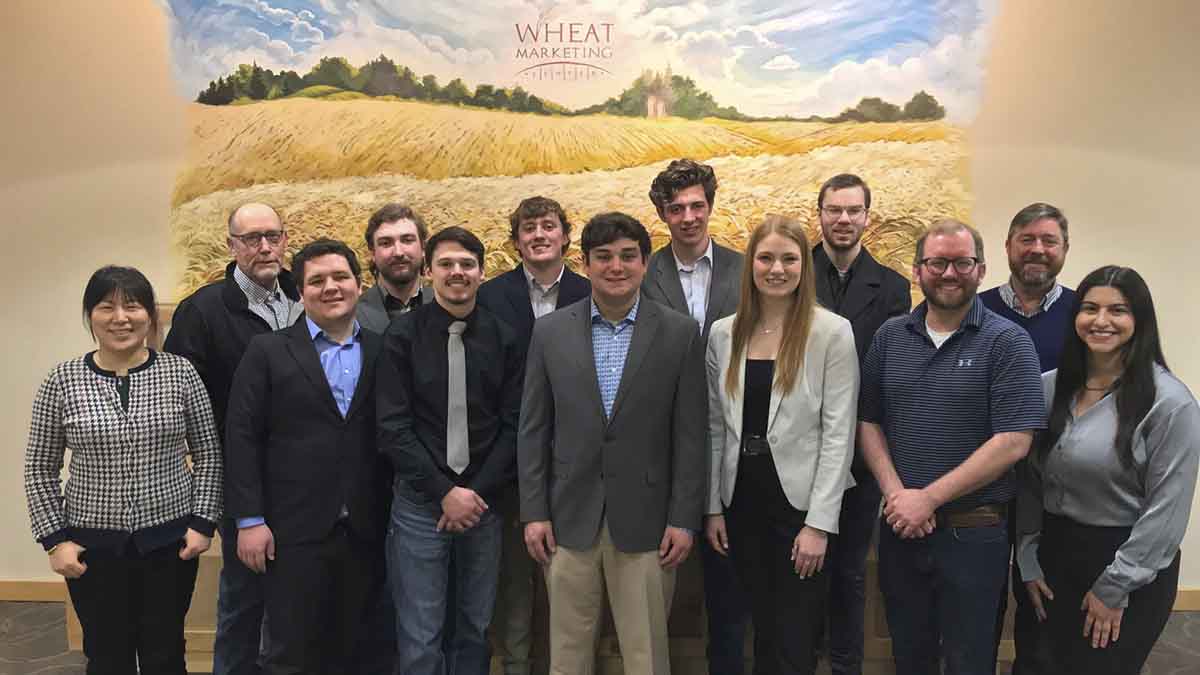
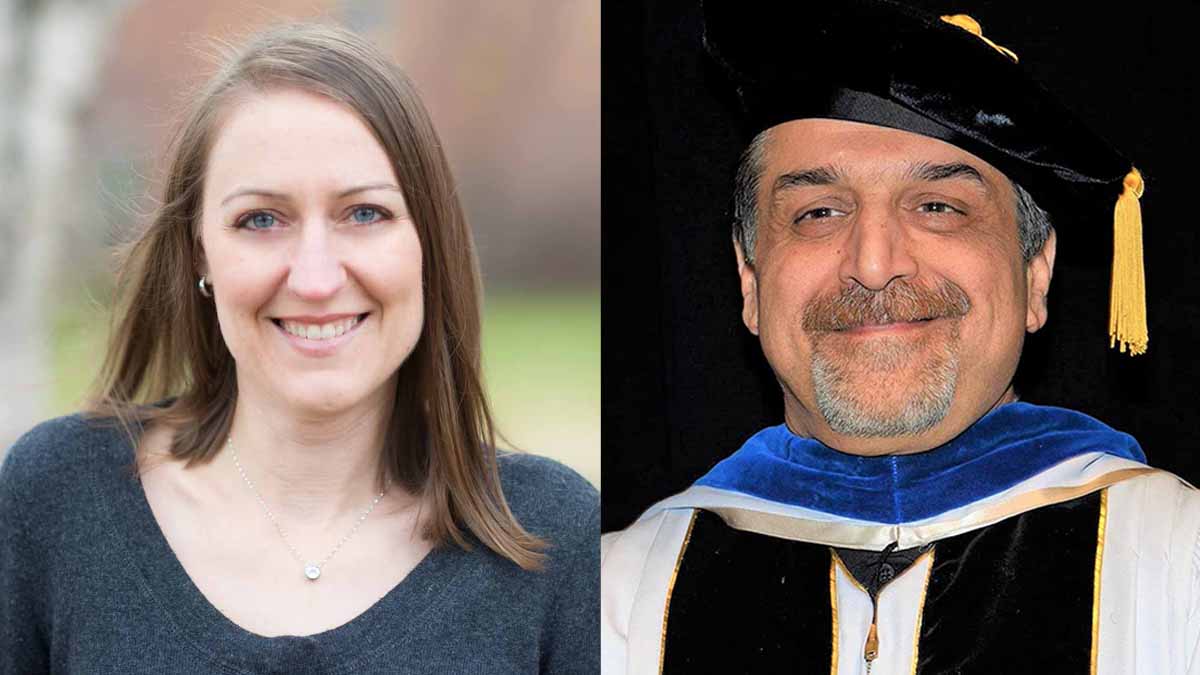

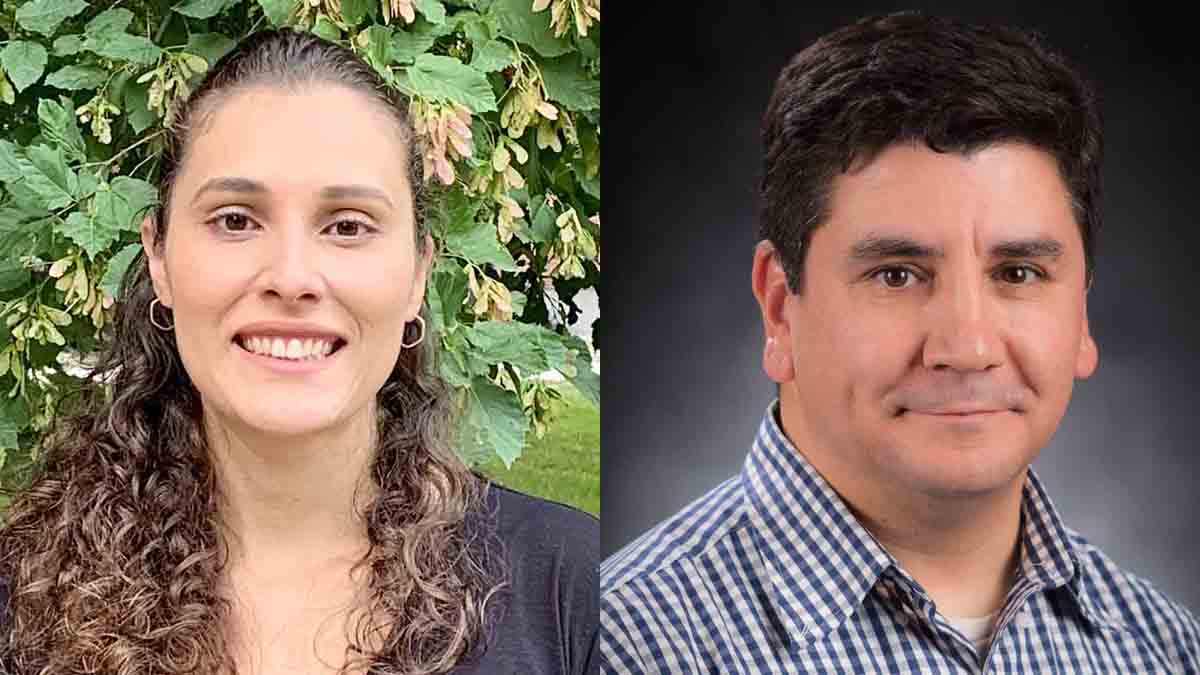
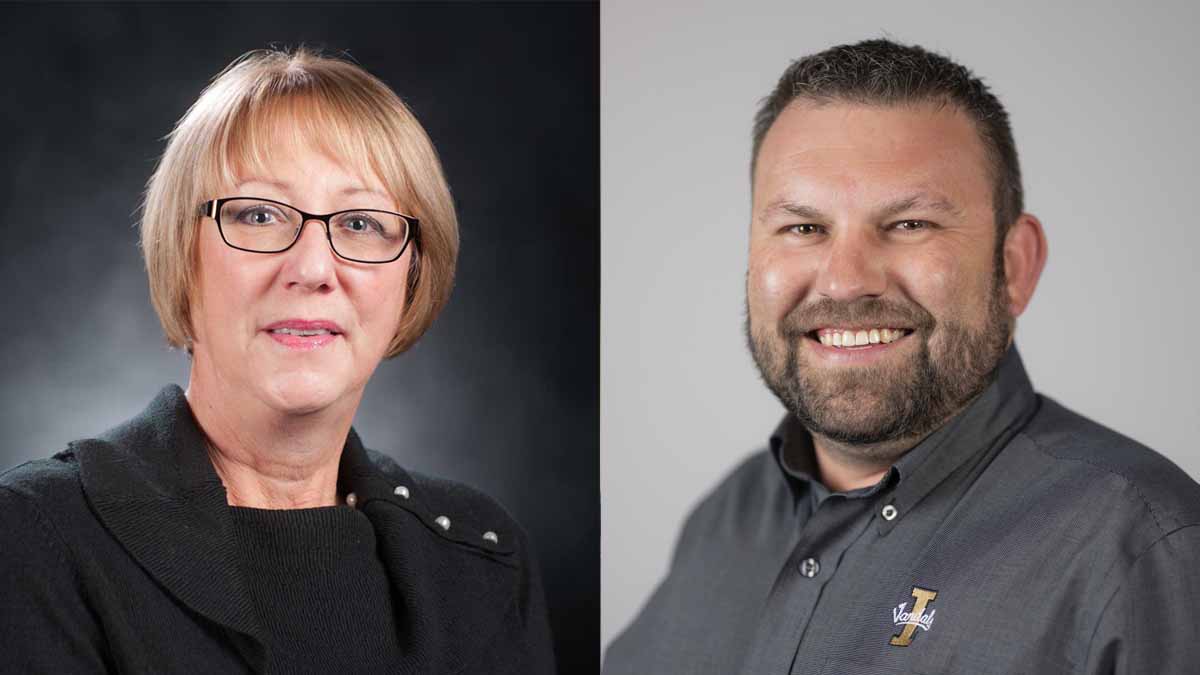
Events
- April 4-5 — Vandal Giving Day, online
- April 7 — Our Financial Conference, University Inn Best Western, Moscow
- April 7 — Institute for Health in the Human Ecosystem’s Annual Research Symposium 2023, keynote by Al Roca in Administration Auditorium and research presentations in the IRIC Atrium, and on Zoom. Contact chhe@uidaho.edu to ask for Zoom link
- April 13 — Readying Rural Communities to Capture the Benefits of Digitalization, Sun Valley Resort, Sun Valley
- April 14 — Deadline for CALS Alumni Award Nominations
- April 20 — Pressure Canning Basics, online
- May 1 — Deadline for application to attend the Young Cattle Producer Conference
- May 3 — CALS Awards Banquet







